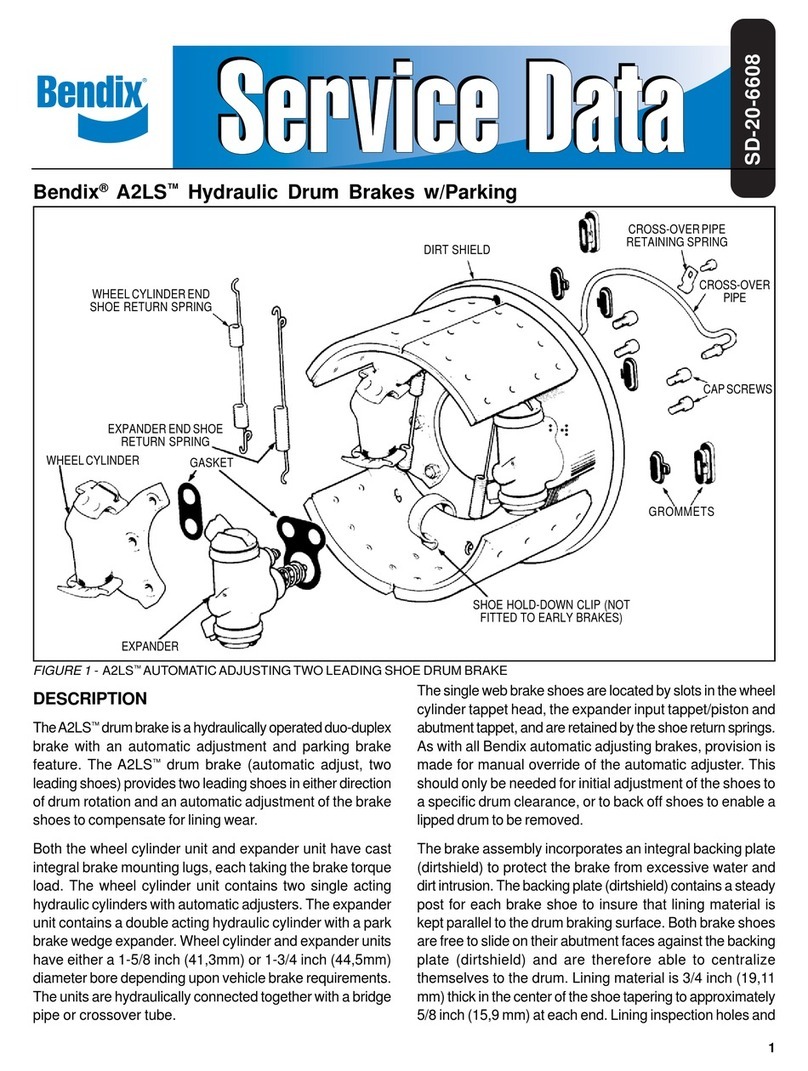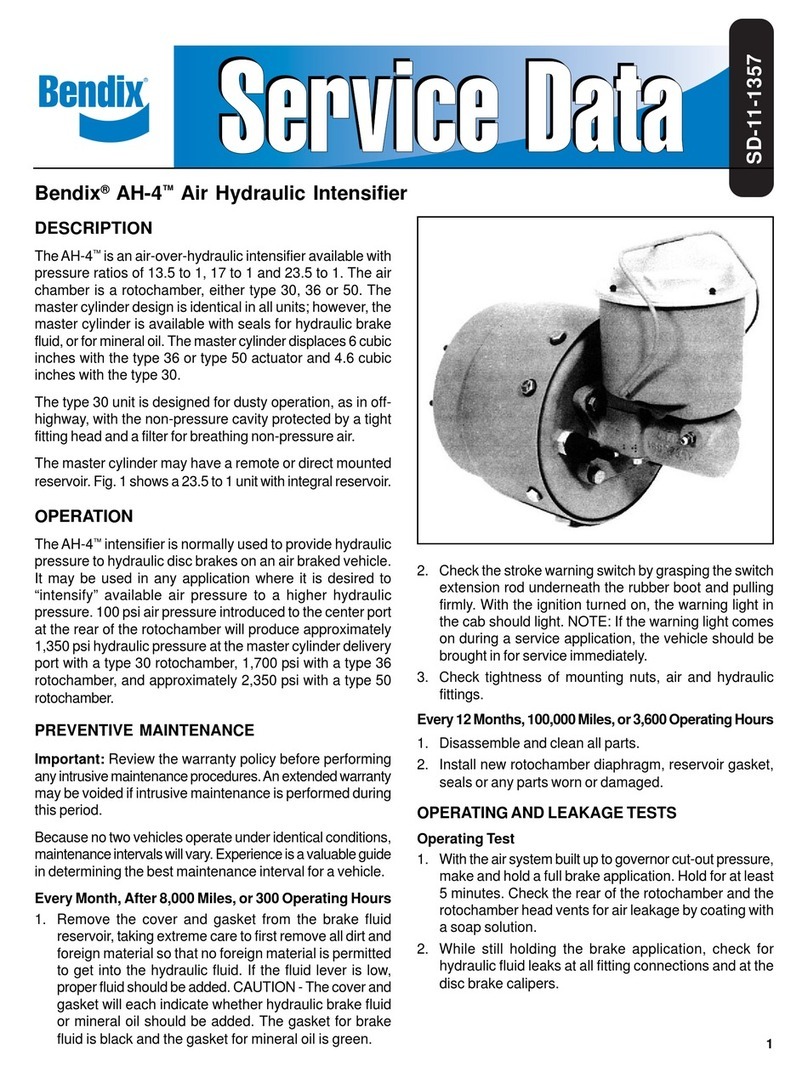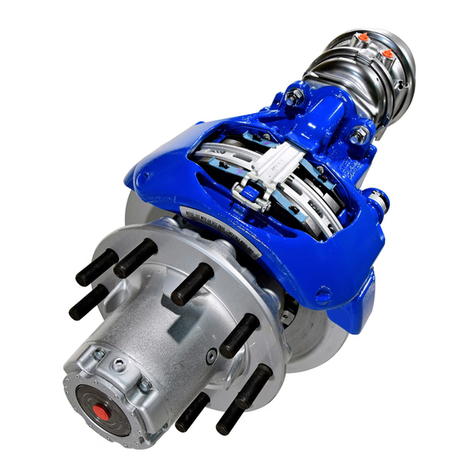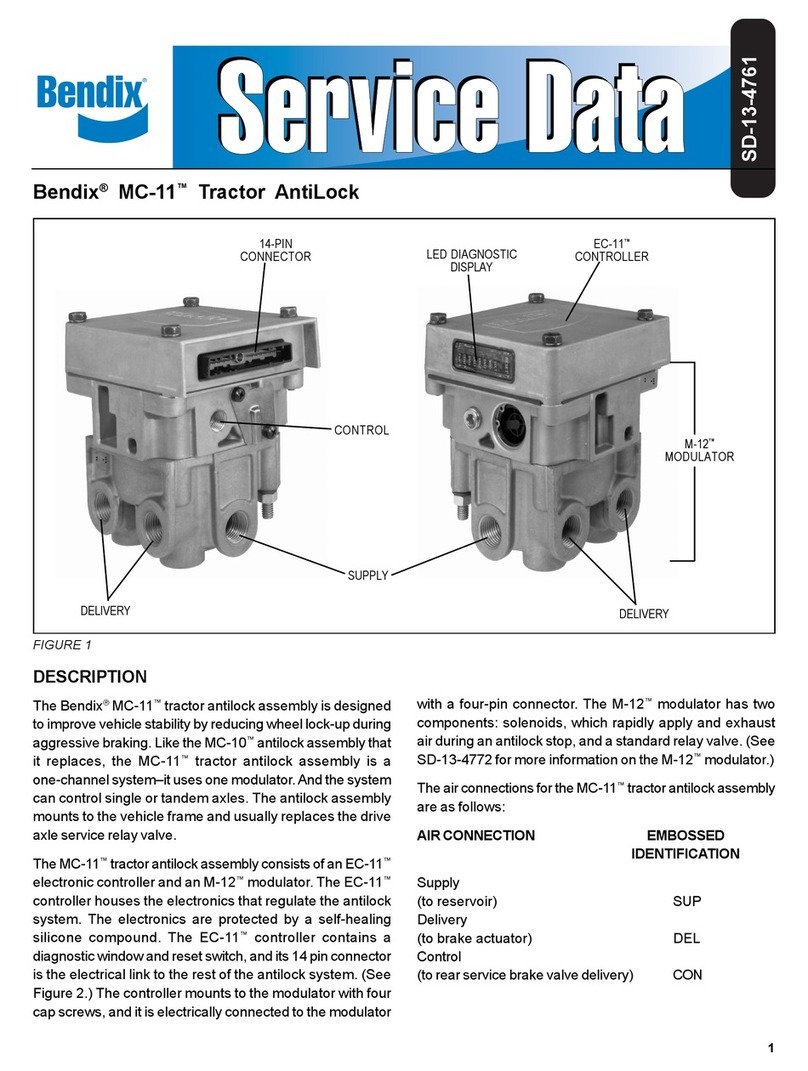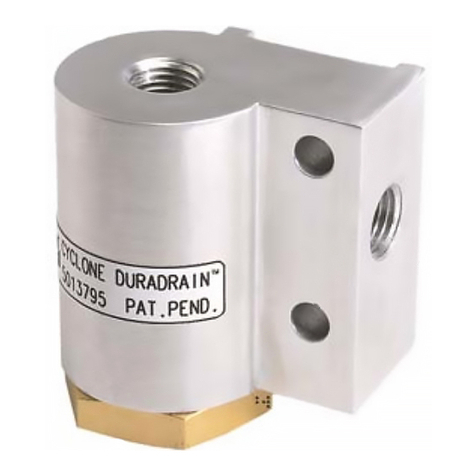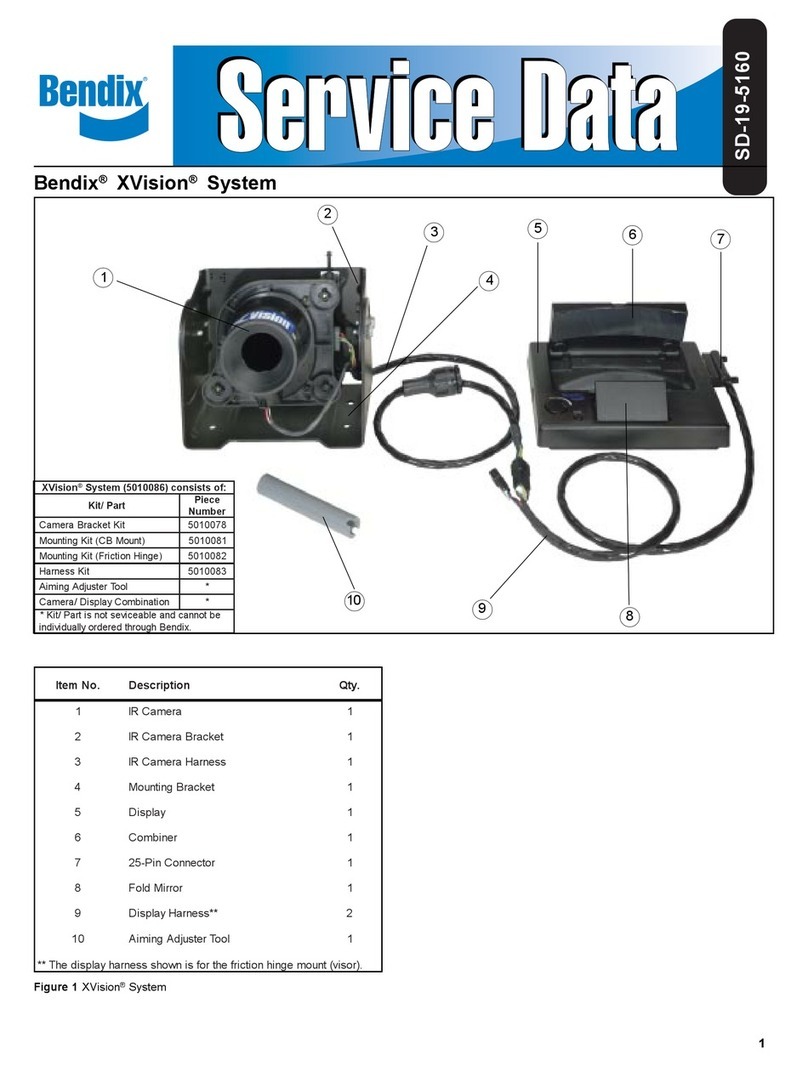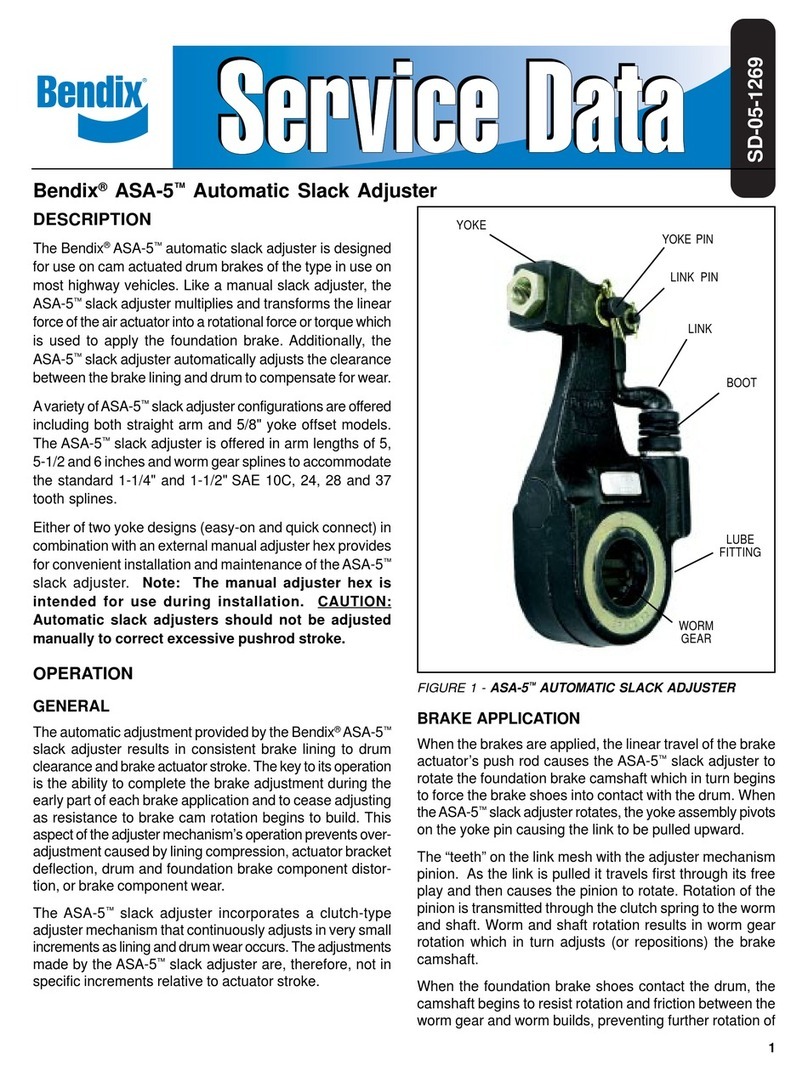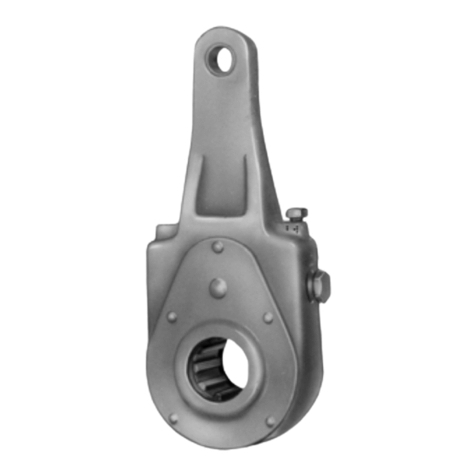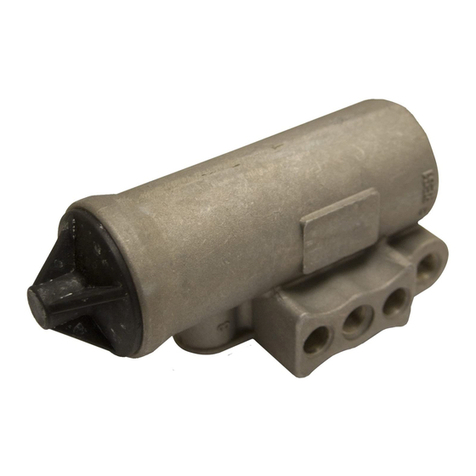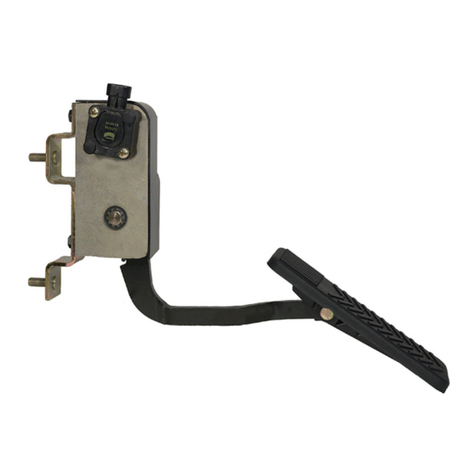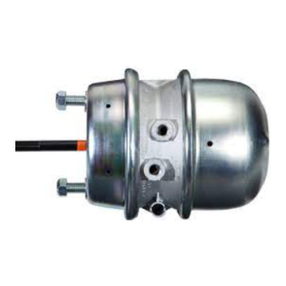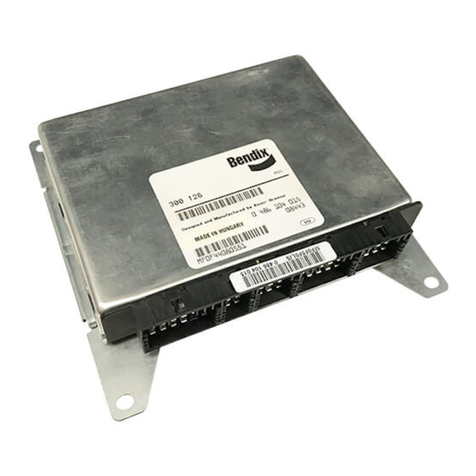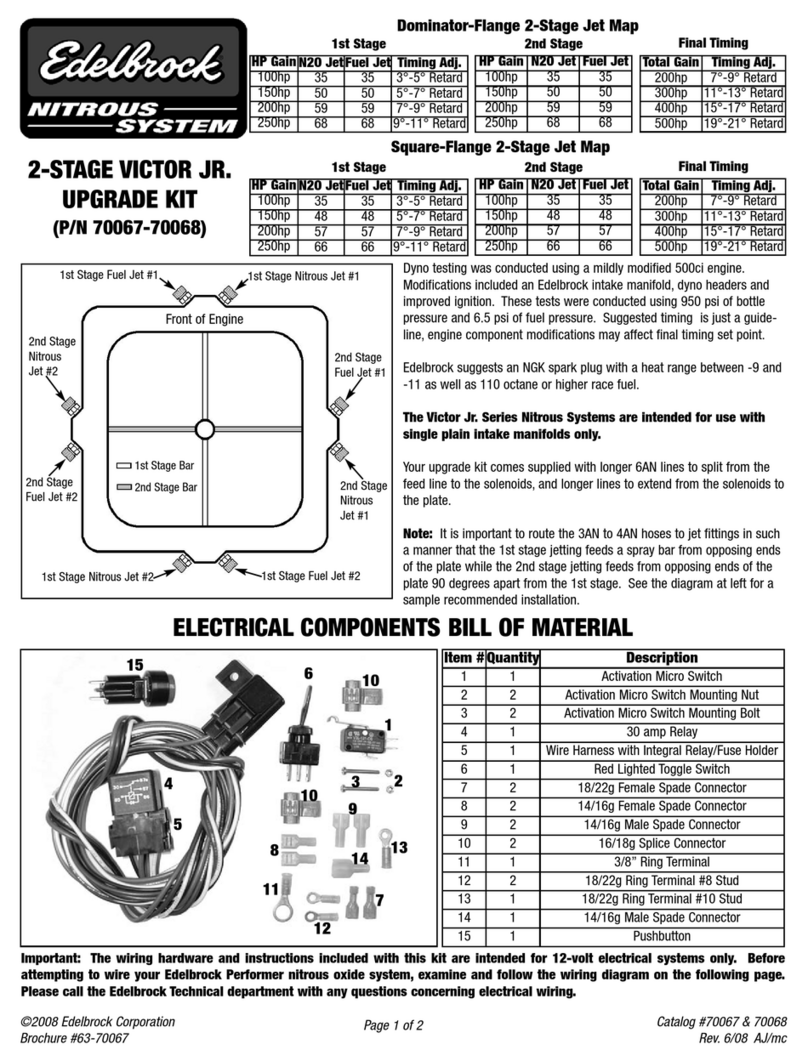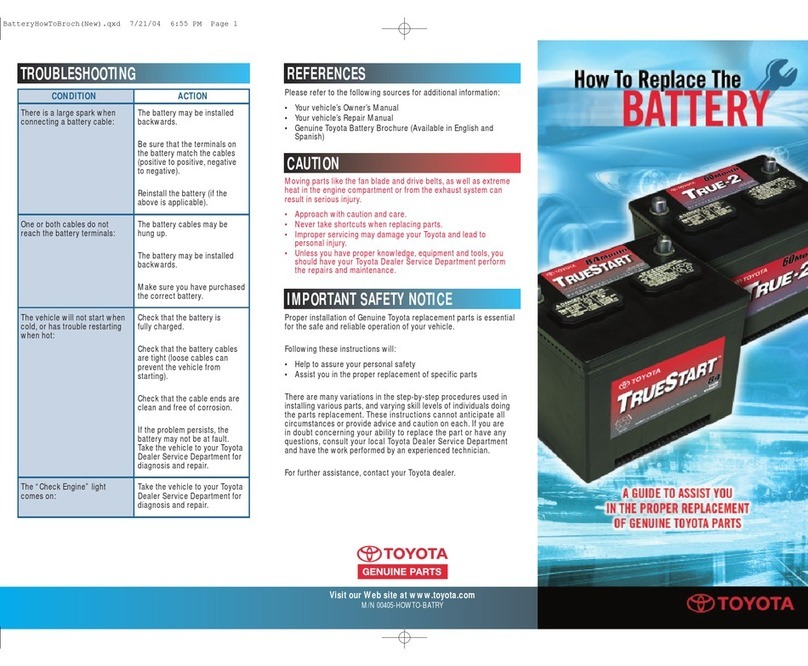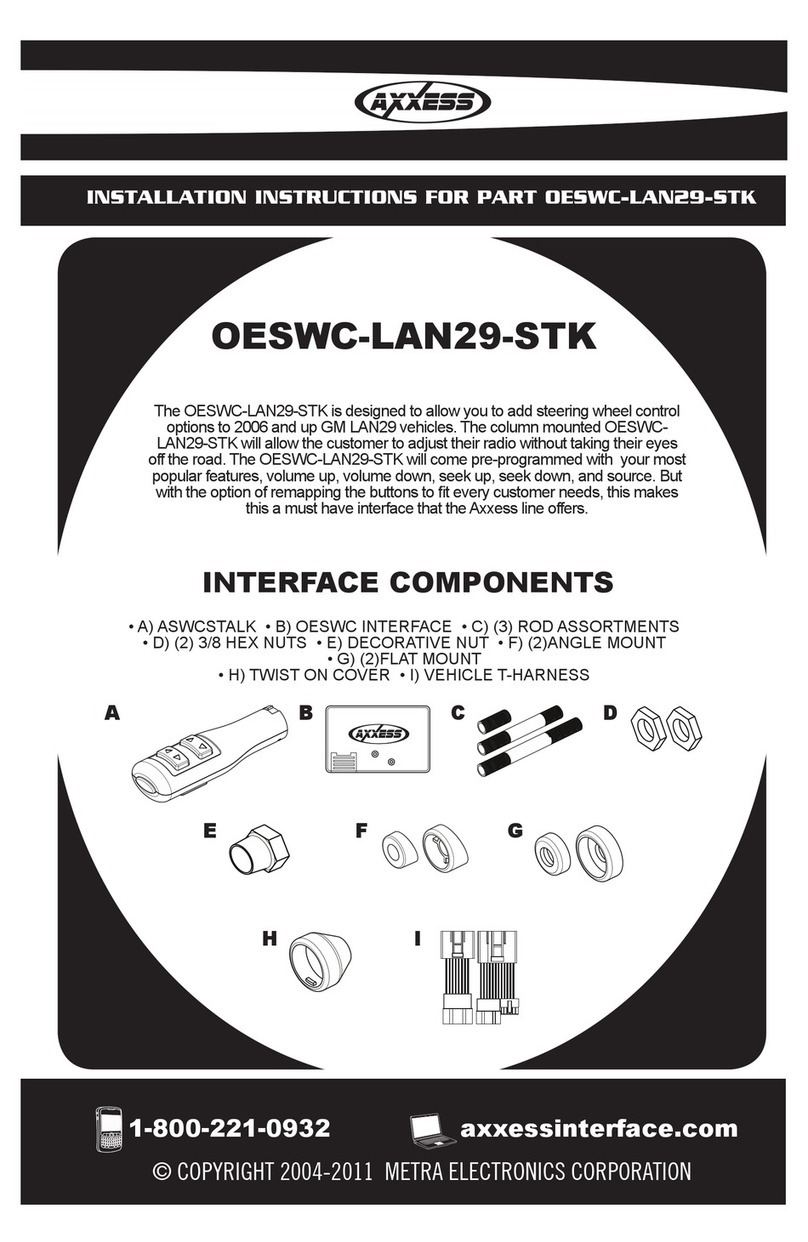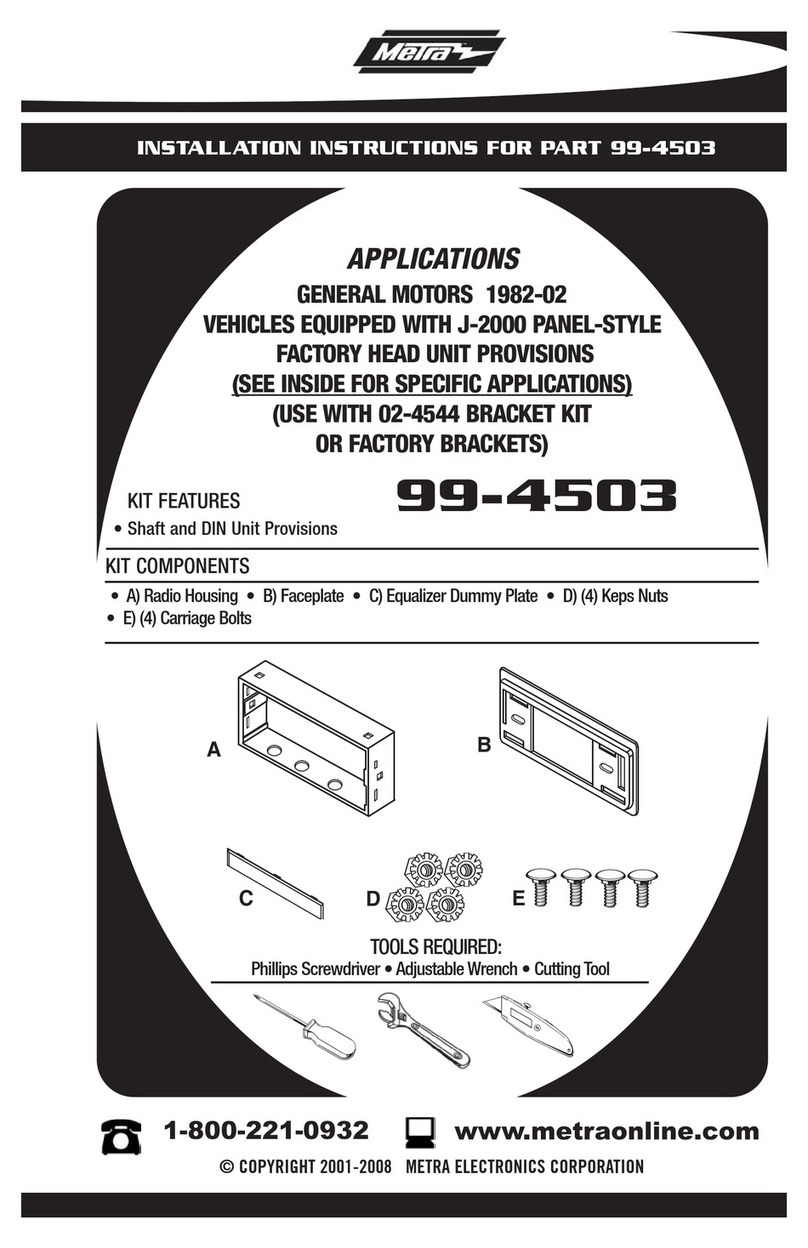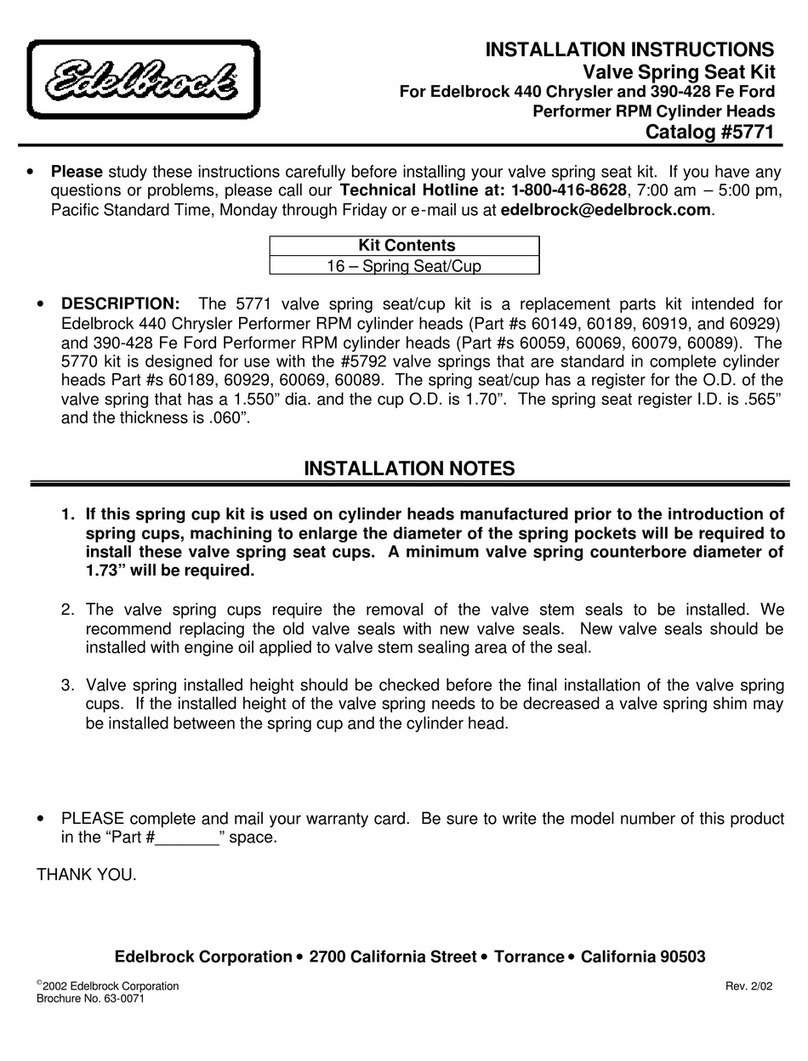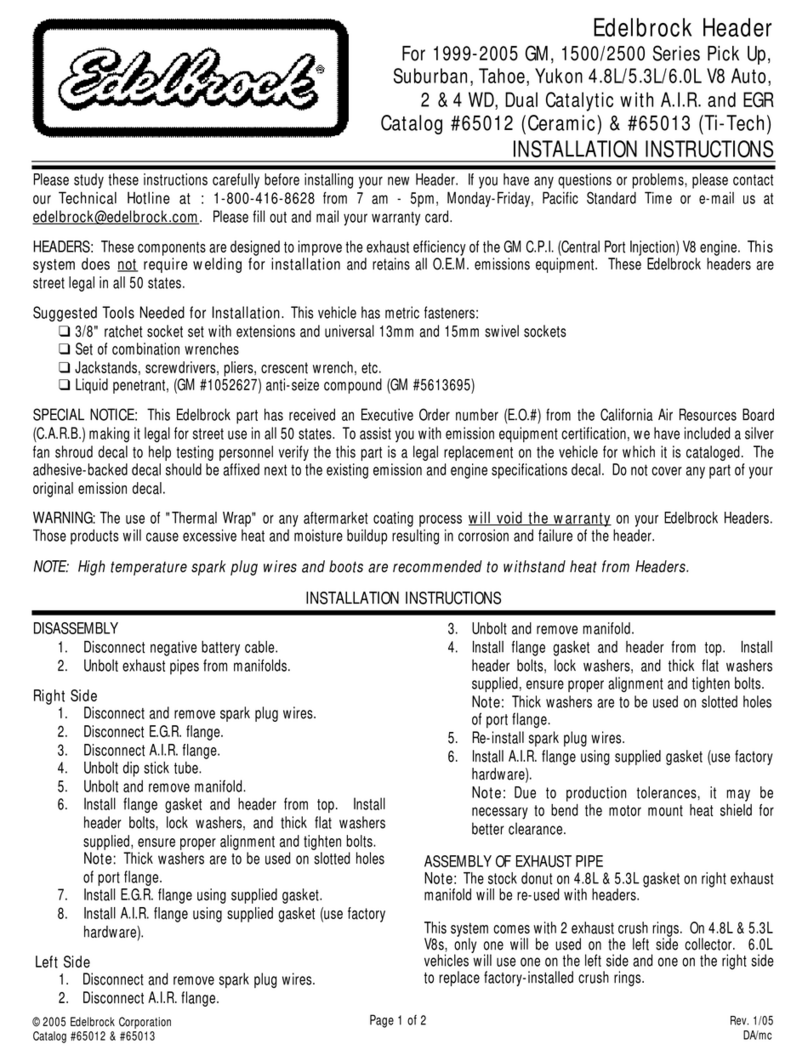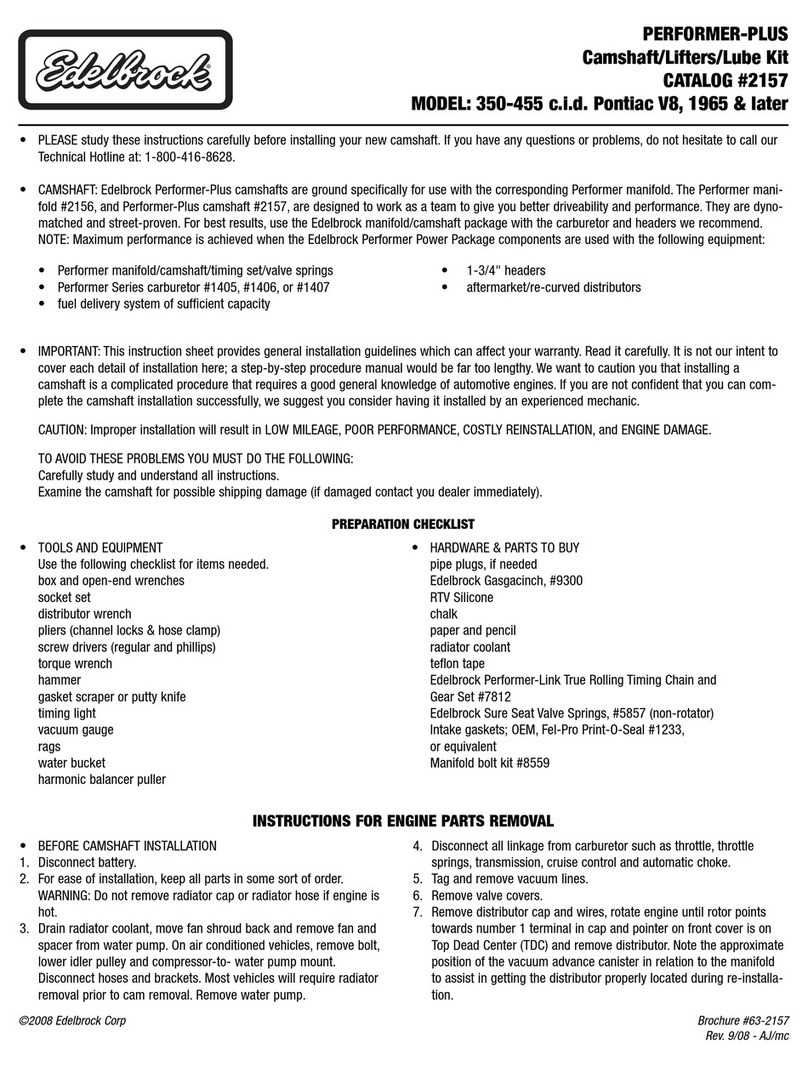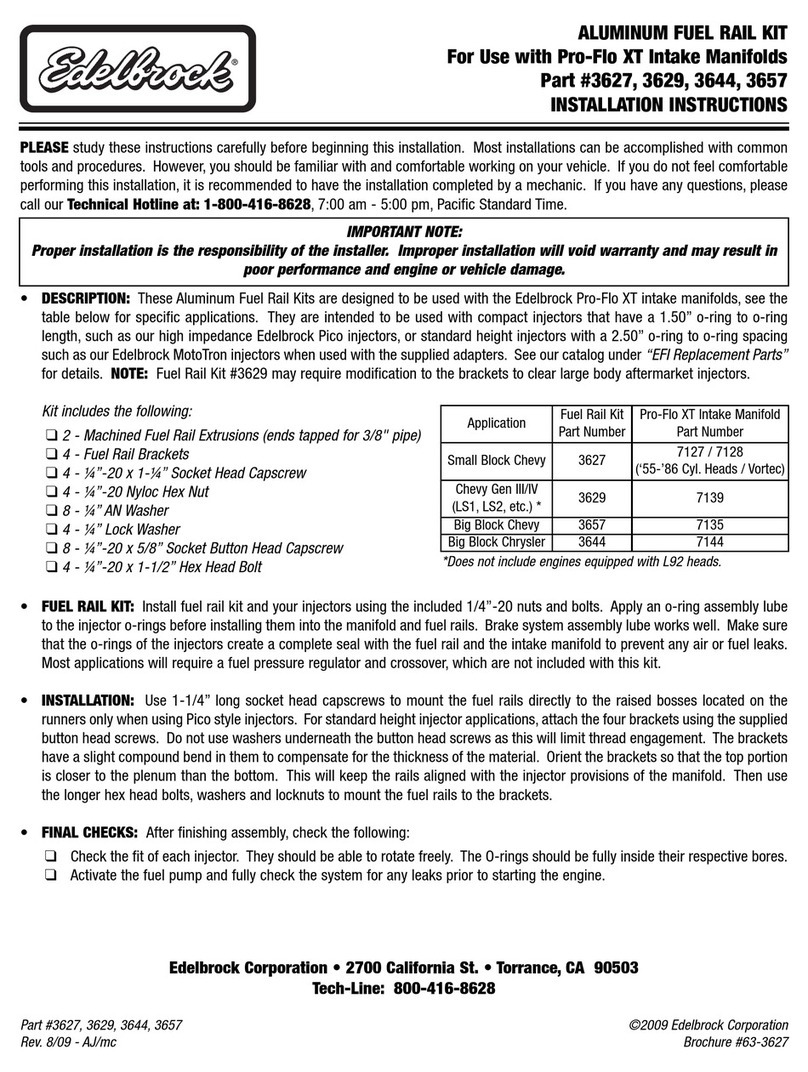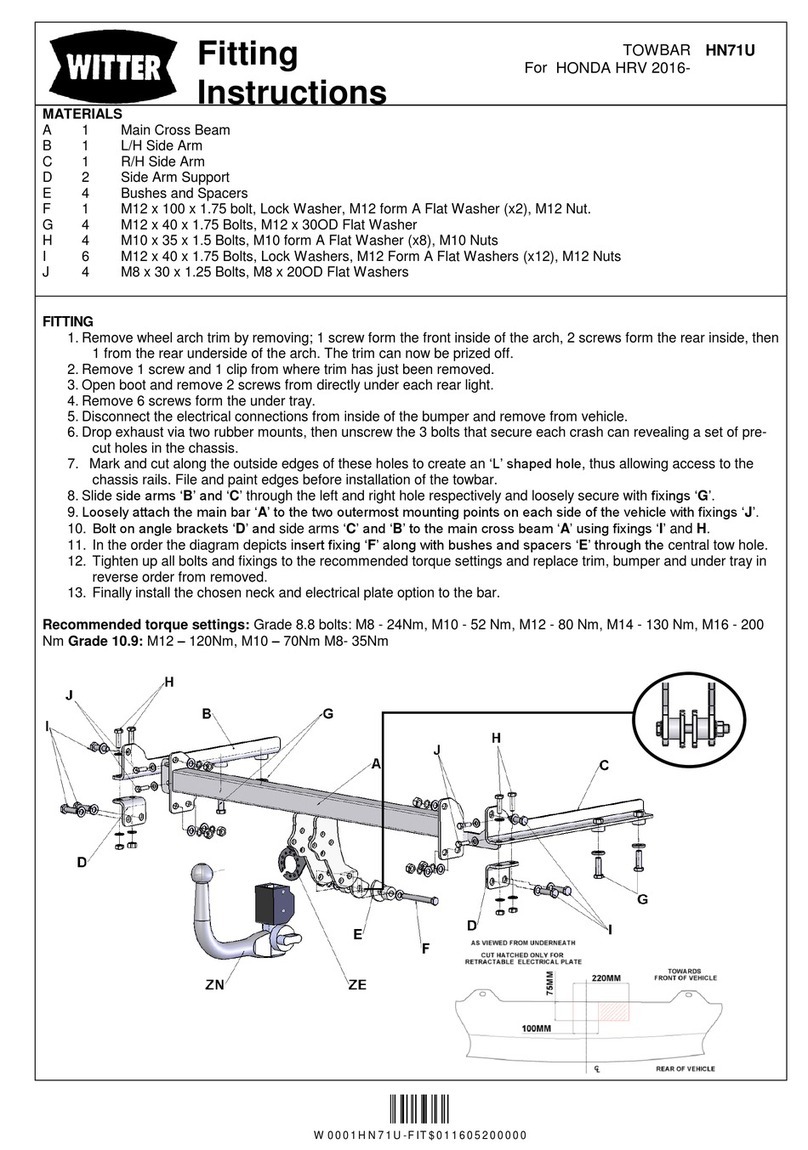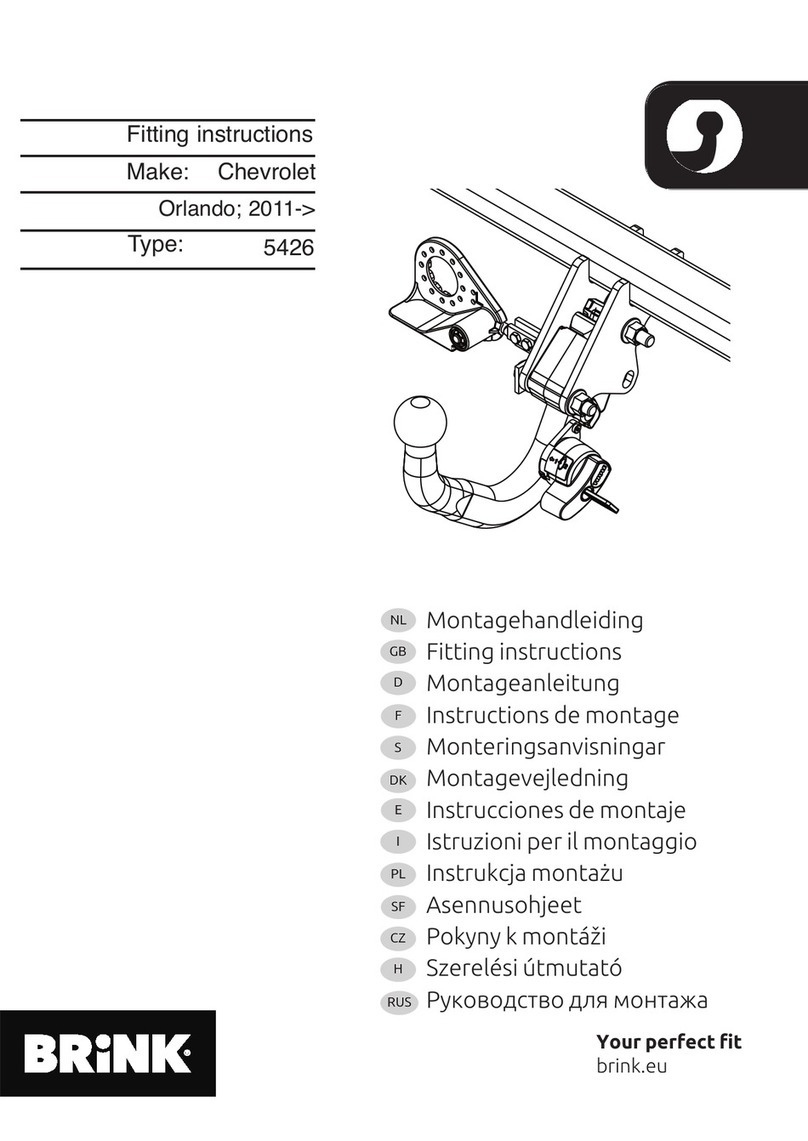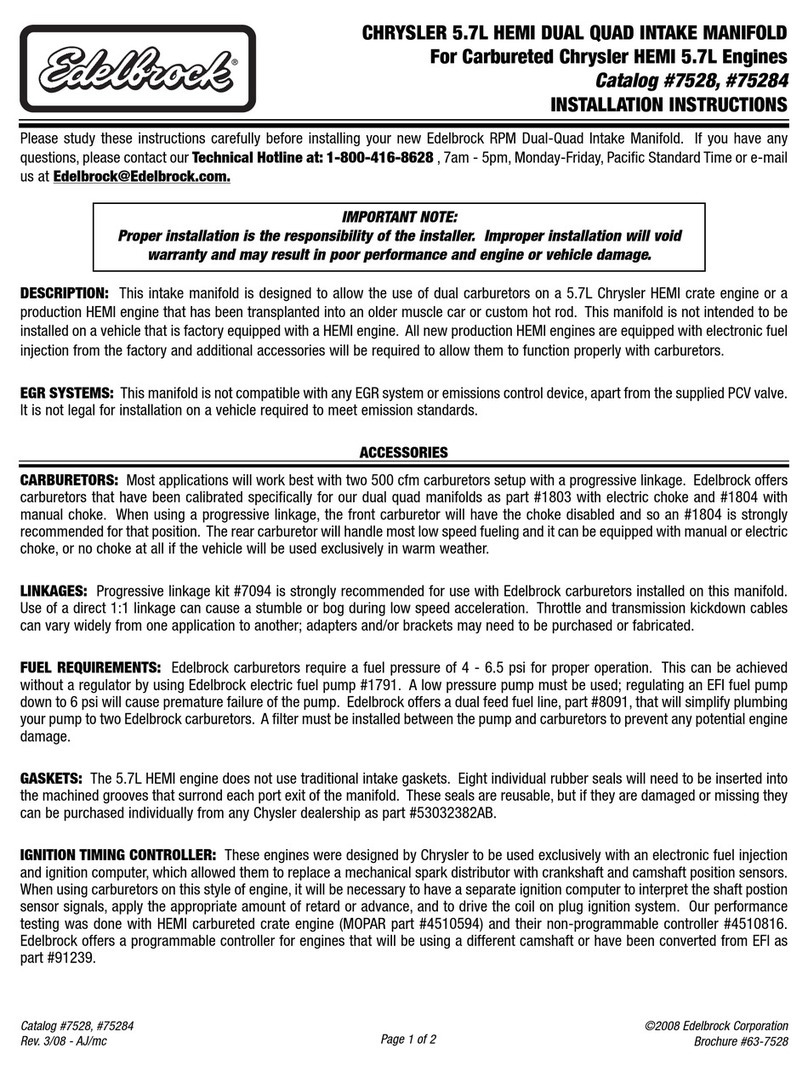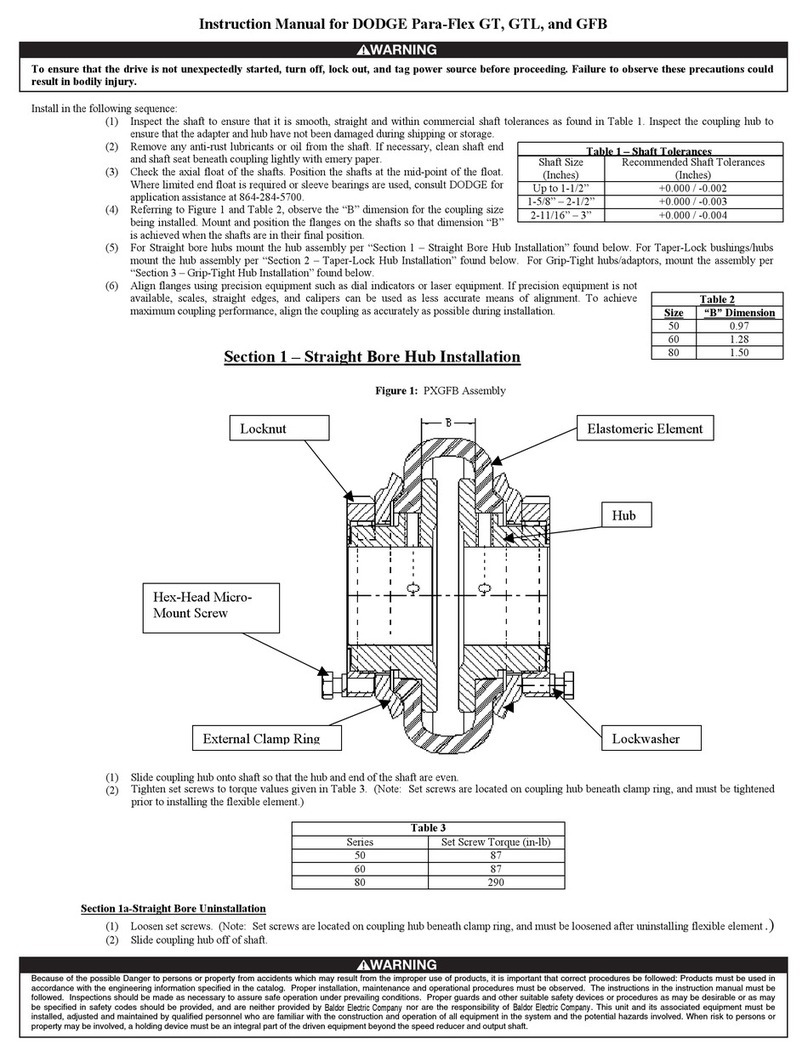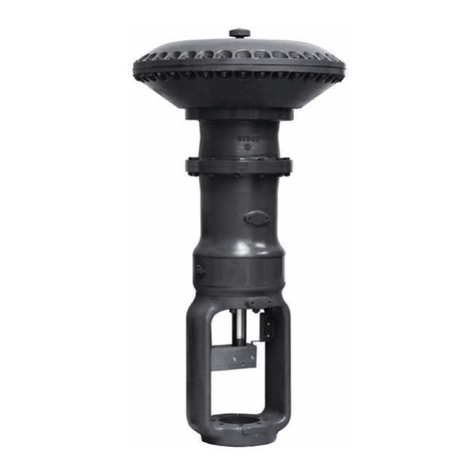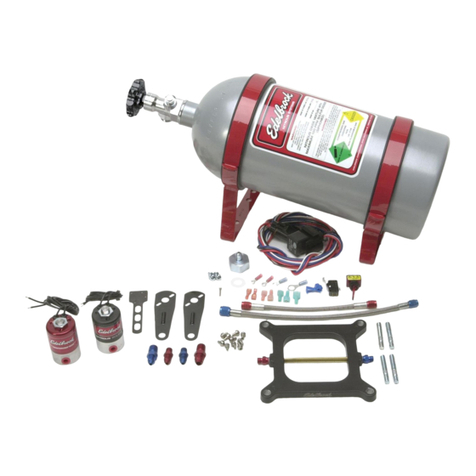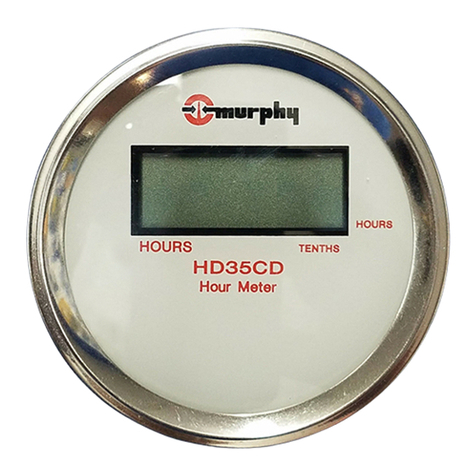
4
TECHNICAL SPECIFICATIONS
AH-1B™Air Hydraulic Intensifier Assembly
Power ratio - 20.2 to 1
Weight-approximately 2-1/2 pounds
Air Actuator
Effectiveareaofdiaphragmat2-1/8inchesofpushrodstroke
- approximately 28 sq.in.
Volume at 2-1/8 inches of push rod stroke - approximately
75 cubic inches.
Master Cylinder
Bore diameter - 1.38 inches
Maximum piston stroke - 2-1/8 inches
Maximum fluid displacement - 3.17 cubic inches
Fluid Reservoir
Volume - 33.5 cubic inch to “MAXIMUM” level mark with
capremoved.
PREVENTIVE MAINTENANCE
Every month, after 8,000 miles, or 300 operating hours;
1. Remove accumulated dirt and grime from the area
around the reservoir cover. With the ignition switch in
theon position, removethecover and hold inanupright
position and allow brake fluid in the tube of the cap to
drain back into the reservoir. Check to see if the low
fluid indicator bulb is operating (in cab of vehicle).
2. If thefluidlevel is low,fill to proper levelindicatedon the
side of the reservoir. CAUTION: Fill the reservoir with
type and grade of fluid recommended by the vehicle
manufacturer.
3. Check tightnessofthemountingnuts, air and hydraulic
fittings.
4. Make a visual inspection of air and hydraulic lines for
kinking, bending or fraying. Replace as necessary.
Every12months;100,000miles;or3,600operatinghours;
1. Perform the operating and leakage tests. Replace or
repair components or assemblies as indicated using
only genuine Bendix parts.
OPERATING AND LEAKAGE TESTS
1. Withvehicleairsystempressurebuilttogovernorcut-out,
makeandholdafullbrakeapplication.Holdforatleast
5 minutes. Using a soap solution, check for air leaks at
fittingsandairlines.Tightenand/orreplaceasnecessary.
Apply a soap solution around the actuator clamp ring.
Noleakageispermitted.Tightenorreplaceasnecessary.
Applya soapsolution totheactuator non-pressureplate
drainholes.Replace the actuator diaphragm if leakage
is detected.
2. Whileholdingthebrakevalve inthefully appliedposition,
check for hydraulic fluid leaks at all fitting connections
and at the hydraulic cylinders in the foundation brake.
Checkfor fluidleakageat the drainholesof theactuator
non-pressure plate. Repair or replace components as
necessary.
3. With the reservoir filter cap removed apply and fully
releasethebrakesseveraltimeswhileobservingthe fluid
inthe reservoir.CAUTION:WEARSAFETYGLASSES
ASFLUID MAYEXITTHERESERVOIR.
Aslightfluidturbulenceshould benoted atthebeginning
of the application and should immediately cease. If
prolongedturbulence isnoted,the mastercylindermust
berepaired orreplaced.
WARNING! PLEASE READ AND FOLLOW
THESE INSTRUCTIONS TO AVOID
PERSONAL INJURYOR DEATH:
When working on or around brake systems and
components, the following precautions should be
observed at all times:
1. Park the vehicle on a level surface, apply the
parking brakes, and always block the wheels.
When working around or under the vehicle, stop
the engine and remove the key from the ignition.
Always keep hands away from chambers as they
mayapply as system pressure drops. Always wear
safetyglasses.
2. When working in the engine compartment, the
engine should be shut off and the ignition key
should be removed. Where circumstances require
that the engine be in operation, extreme caution
shouldbe used toprevent personal injury resulting
from contact with moving, rotating, leaking, heated
or electrically charged components.
3. Do not attempt to install, remove, disassemble or
assemble a component until you have read and
thoroughly understand the recommended
procedures. Use only the proper tools and observe
all precautions pertaining to the use of those tools.
4. Following the vehicle manufacturer’s
recommendedprocedures, deactivatethe electrical
system in a manner that safely removes all
electrical power from the vehicle.
5. If the vehicle is equipped with an air over hydraulic
brake system or any auxiliary pressurized air
system, make certain to drain the air pressure from
all reservoirs before beginning ANY work on the
vehicle. If the vehicle is equipped with an AD-IS™
air dryer system or a dryer reservoir module, be
sure to drain the purge reservoir.
6. Never connect or disconnect a hose or line
containing pressure; it may whip. Never remove a
component or pipe plug unless you are certain all
system pressure has been depleted.
7. Never exceed manufacturer’s recommended
pressure.









